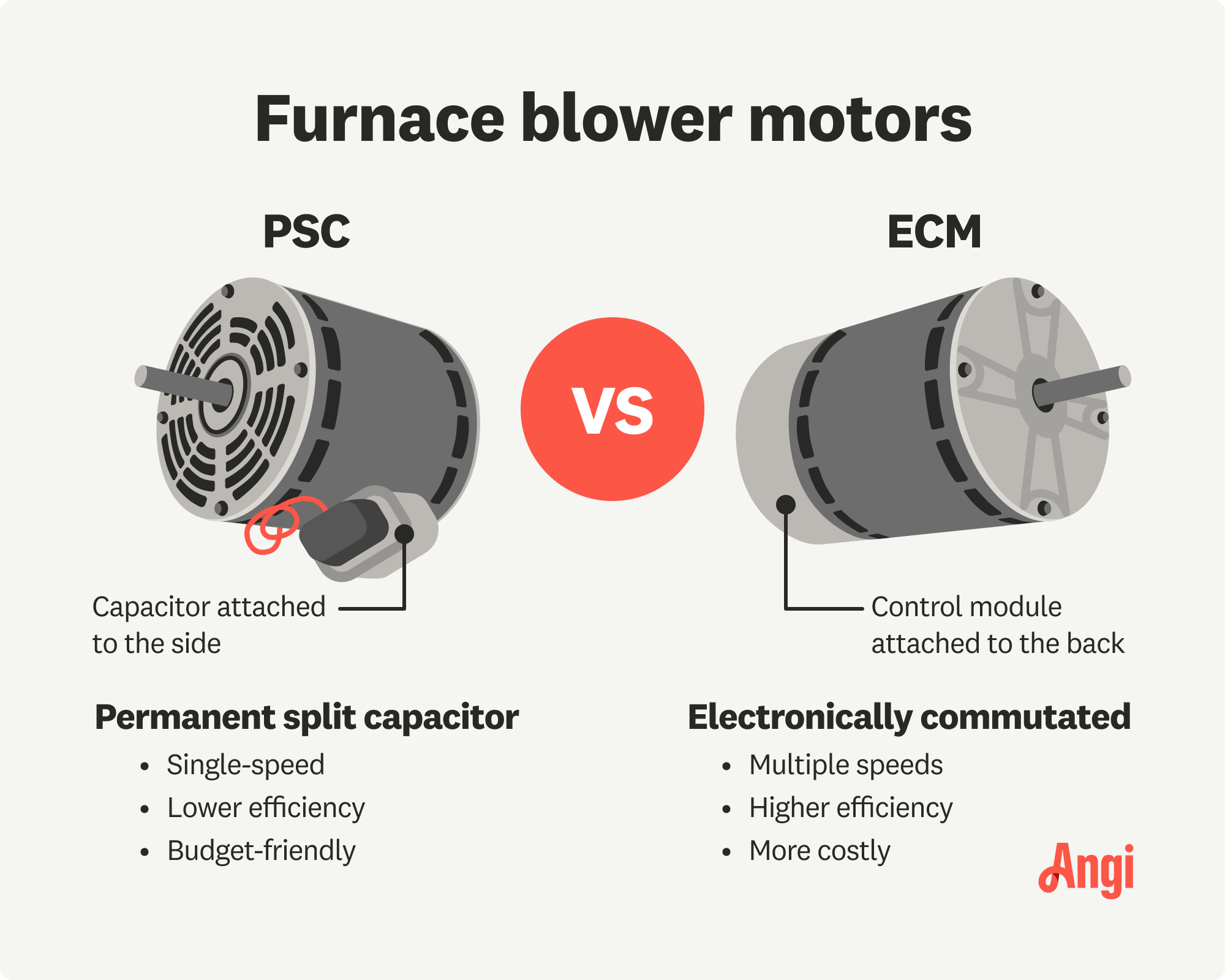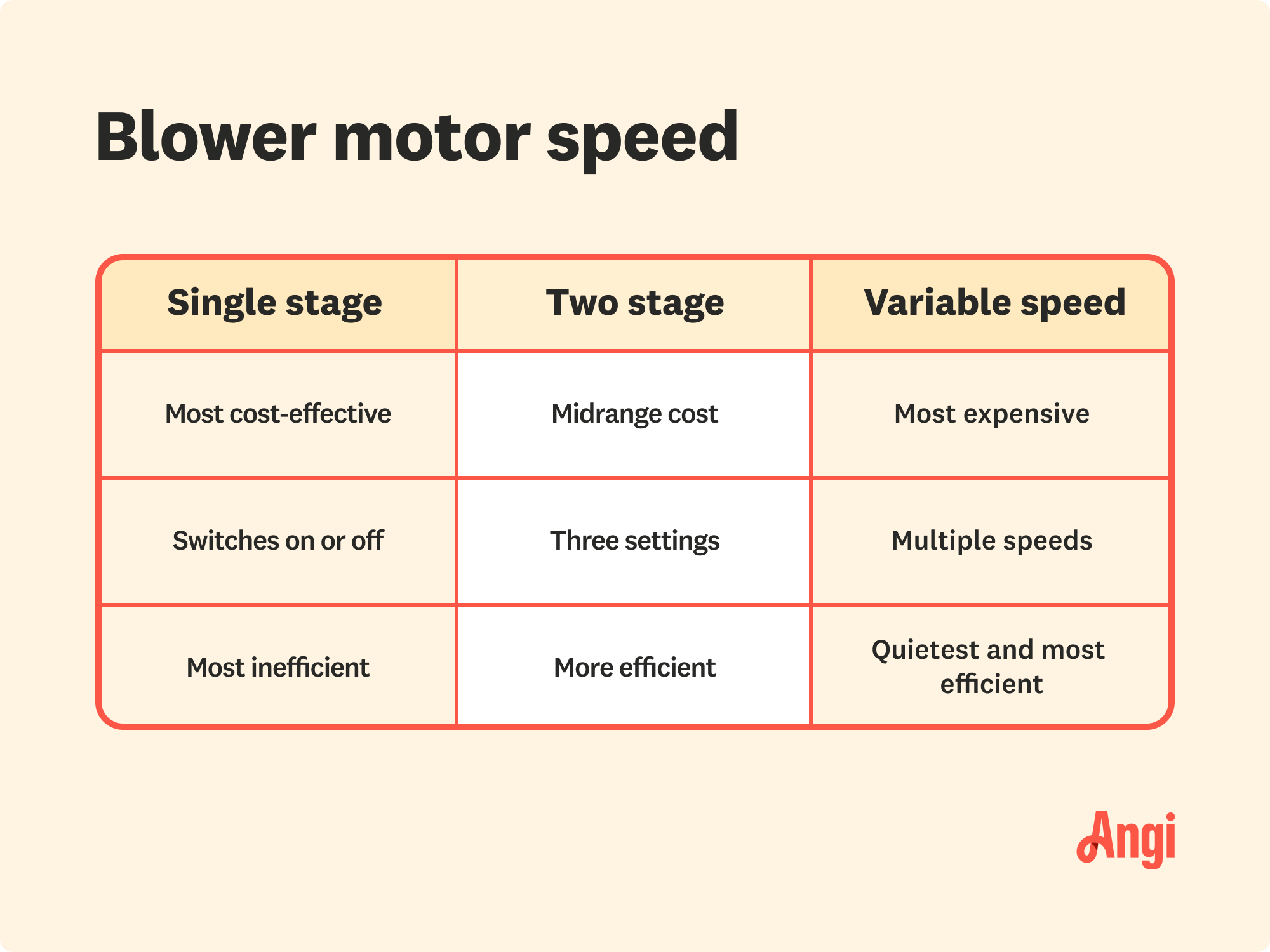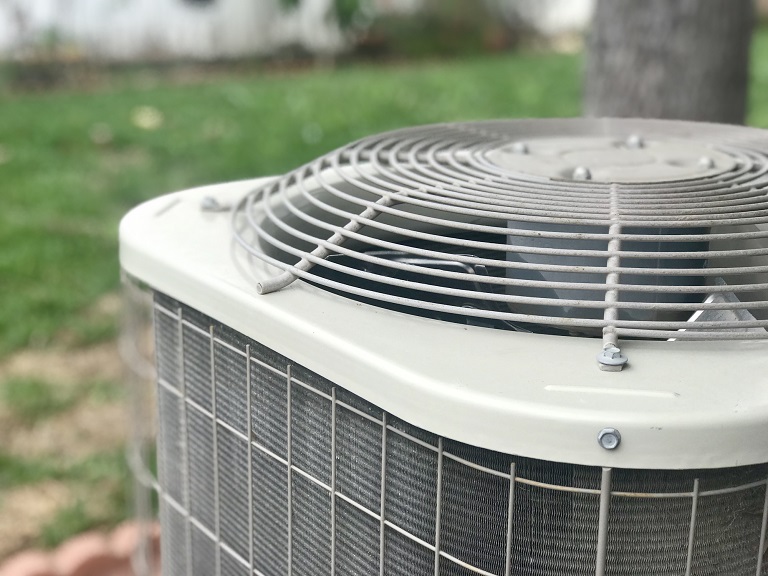
Heating and cooling system on the fritz? Discover the factors that go into HVAC repair costs and how you can save money on this crucial home update.
Heating and air conditioning service costs depend on your project and location. Check with a local pro for your specific job.
Blower motor size is the most impactful cost factor, with every 1/4 horsepower adding an average of $560 to your total.
Multiple-speed blower motors are 40% more expensive than single-speed ones, but last longer.
Blower motor repairs cost around $300, so consider a fix over replacement if it’s not old.
Check your HVAC system warranty before replacing the blower motor to see if it’s covered.
The average blower motor replacement cost is $560, but the final price depends on labor fees, as well as the cost of the parts. Some higher-end models feature large or hard-to-reach motors, which could bring your HVAC blower replacement cost to as much as $2,400. An active warranty means you might only pay around $150 to cover labor.
It’s not just hot air to say that your HVAC system can't run without its blower motor. This crucial component sits inside the air handler, sending heated or cooled air through the ducts and out of the vents where you need it most.
The overall cost to replace a blower motor could entail replacing the entire unit or just specific parts. This, along with your labor costs, is what makes up the numbers on your final bill.
Blower motor size is one of the most significant cost factors. Motor size is measured in horsepower amounts ranging from 1/4 to 1 horsepower. Average costs increase with horsepower, while labor costs for each size are roughly the same.
The most common residential motor sizes are one-quarter, one-third, and one-half. Higher horsepower motors have more power to push air and usually operate more quietly. However, a motor that's too large for your home can needlessly increase installation costs and may make your system less efficient.
| Blower Motor Size | Average Cost |
|---|---|
| 1/4 horsepower | $100–$550 |
| 1/3 horsepower | $100–$800 |
| 1/2 horsepower | $120–$1,000 |
| 3/4 horsepower | $175–$1,500 |
| 1 horsepower | $250–$2,000 |

Furnace blower motors come in various types, each at a different price point. Single-stage permanent split capacitor (PSC) motors come at a lower upfront cost than two-stage or variable-speed electronically commutated motors (ECM), but they're less efficient to run with higher operating costs.
| Blower Motor Type | Average Cost |
|---|---|
| PSC | $350–$800 |
| ECM | $600–$1,150 |

Blower motors can also be categorized by speed. Single-stage motors are the simplest (and least expensive) option, while variable speed motors are on the pricier end.
| Blower Motor Speed | Average Cost |
|---|---|
| Single-stage | $300–$900 |
| Two-stage | $320–$1,100 |
| Variable speed | $600–$1,500 |
Installing a new heating and air conditioner blower motor could cost around $150 to $250, with most of that coming from labor costs. HVAC technicians usually go for around $75 to $125 per hour. A blower motor replacement might take anywhere from one-and-a-half to two-and-a-half hours.
Your HVAC system’s ease of access can affect your labor costs. You'll probably get a minimal baseline fee if it’s somewhere quick and easy, such as a main-floor closet. If your HVAC pro has to tromp through the dark depths of your attic or basement, you might get an extra charge.
You’ll spend $350 to $1,150 on the motor itself if you DIY, meaning you could save around $800 in labor costs. Can you replace a blower motor without much risk of hurting the system? Sure, but you’re very likely to hit a snag in the process.
For example, imagine investing the time and energy into replacing the blower motor, only to discover that this wasn’t why your system was having problems. Even if you successfully pinpoint a blower motor issue, you might overlook a bigger problem that caused the failure in the first place. If the latter is the case, then R.I.P. to your brand-new motor (it was so young, too).
Such is the plight of the DIYer when it comes to HVAC repairs: diagnosing the repair often requires advanced, professional-level expertise. Sure, you might figure out the how, but you’ll likely have trouble deciphering the why. It’s best not to attempt anything until you’ve consulted an HVAC repair pro near you.
There’s no one-size-fits-all number for HVAC blower motor replacement costs, as many factors are at play. Below are the most common points that might affect your bill.
If your HVAC system is still under warranty, you’re in luck. Most warranties will cover the premature failure of the blower motor, so you’ll just have to cover labor for about $150 to $250.
Part of your HVAC repair cost may include replacing other parts of your blower at the same time as the motor. These extra components and the labor required to replace them will add to your total cost. For example, you may need to replace your HVAC TXV if your AC system isn’t blowing cool air. You can find other blower parts and their costs in the table below.
| Blower Component | Average Cost |
|---|---|
| Belt | $5–$100 |
| Capacitor | $10–$50 |
| Bearing | $20–$175 |
| Wheel | $25–$300 |
| ECM repair kit | $30–$60 |
| Shaft | $40–$250 |
| Pulley | $40–$250 |
| Housing | $95–$300 |
| ECM module | $225–$815 |
| TXV | $100–$700 |
Just like repairing versus replacing your entire furnace, the same dilemma exists for the blower motor. Is your entire motor kaput, or is it just a small part?
Repairing a blower motor costs anywhere from $150 to $1,500, depending on what went wrong. On the other hand, a full replacement might cost upwards of $2,000 once you factor in labor costs. So if your repair estimate is sky-high, you might get a better value with total replacement.
Hiring a local HVAC technician to replace a blower motor protects both you and your system. Professionals have the specialized tools, training, and experience to handle electrical components safely, preventing hazards like electrical fires and personal injury from improper installation.
Replacing a blower motor involves electrical work, heavy components, and proper diagnostic testing. Here’s why you should always hire a professional HVAC technician for this job:
HVAC professionals have the know-how to correctly diagnose whether the blower motor, or possibly a different component, is causing the issue.
A pro ensures proper installation to maintain warranty coverage and energy efficiency.
Certified contractors can identify and replace worn-out components during the same visit, saving you future repair costs.
Hiring a professional avoids system damage and reduces the risk of fire or electrical hazards.
If you have experience working with electrical components and verify that your problem is the blower motor, you may be able to DIY a blower replacement. Here are a few tasks that an experienced DIY-er can potentially handle:
Shutting off gas and electrical power before work begins.
Cleaning dust and debris from the blower assembly.
Replacing a capacitor, belt, or other small, accessible components if you have prior experience.
Replace the blower motor if it’s in a clear, accessible location and you have advanced HVAC knowledge.
Locate your HVAC system’s model number and warranty information ready before contacting a technician.
Ask your HVAC pro to confirm the correct blower motor type (PSC vs. ECM) and size for your unit.
Clarify labor costs, timelines, and warranty coverage for both parts and service.
Home is the most important place on earth, which is why Angi has helped more than 150 million homeowners transform their houses into homes they adore. To help homeowners with their next project, Angi provides readers with the most accurate cost data and upholds strict editorial standards. We extensively research project costs to develop the pricing data you see, so you can make the best decisions for you and your home. We rely on reputable sources, including the U.S. Bureau of Labor Statistics, academic journals, market studies, and interviews with industry experts—all to ensure our prices reflect real-world projects.
Want to help us improve our cost data? Send us a recent project quote to [email protected]. Quotes and personal information will not be shared publicly.
From average costs to expert advice, get all the answers you need to get your job done.

Heating and cooling system on the fritz? Discover the factors that go into HVAC repair costs and how you can save money on this crucial home update.

When your heat goes out, it can cause a bit of a panic. But knowledge is power, so let's go over radiator repair costs before that happens.

Exposed ductwork can be a smart choice even beyond aesthetics. Fortunately, exposed ductwork costs are relatively low, and easy access keeps repair costs to a minimum.

Discover the average air handler replacement cost, including labor and materials, plus expert tips to help you budget and save on your HVAC upgrade.

Figuring out how to eliminate ductwork noise may require anything from replacing the ducts to changing the filter. Learn more about fixing this issue.
How to clean your air conditioner depends on the unit type. Sometimes, a good hose-down is all you need if you have centralized AC. This guide can help with the cleaning process.